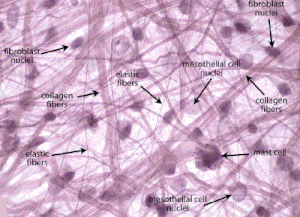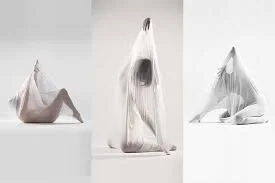What is Fascia?
Therabands, rollers and swinging kettlebells are all the rage in fitness right now. They help restore and support better movement and build strength and stability. But why? What are they doing? What does rolling on a foam roller actually do for your body?
It supports a soft skeleton system in your body called fascia.
But really, what is fascia?
Fascia is basically a spiderweb network of fibers and cells sitting in a thick syrup-like fluid. These fibers wrap around each and every muscle in the body connecting muscles and movements together. They also form a continuous layer under the skin like a body sock and extend deep within the muscles themselves.
“Fascia is a sheath, a sheet, or any number of other dissectible aggregations of connective tissue that formed beneath the skin to attach, and clothes, and separate muscles and other internal organs.”
(September 18th 2015 at the 4th International Fascia Research Congress)
Why is Fascia Important?
These fibers have many jobs in the body. First, they have the ability to transport nutrients and, due to their chemical nature, water throughout the body, even bringing water to dehydrated cells deep within the muscles. Second it provides a structural framework for the muscles to build and work against similar to a scaffold on a building. Third, the fascia can transmit force through the fibrous network. For example, when you jump and land on your feet the force of your landing is transmitted from the soles of the feet through the fascia to the rest of your body allowing it to dissipate. Lastly, fascia has the ability to respond to mechanical and nervous inputs from the outside world. It can build more strength or flexibility into the network. In other words the environment and our movement through it can affect the structure of our fascia and its ability to function.
“Fascia is the tensional, continuous fibrillar network within the body, extending from the surface of the skin to the nucleus of the cell. This Global Network [or soft skeleton] is mobile, adaptable, fractal and irregular; it constitutes the basic structural architecture of the human body.”
(Guimberteau and Armstrong, 2015)
How does Fascia Relate to movement?
The body is not a solid structure. We have solid parts, like bones, strung and held together with bands, like fascia, that can be put under compression (through muscle contraction). Tensegrity refers to this concept that structural integrity can be formed from continuous tension and discontinuous compression members in an object. Buckminster Fuller developed the concept of tensegrity.
It used to be thought that the body was a compression structure with the bones stacked upon one another. Now we view the body as a tensegrity structure with fascia as the tension members and the bones as the discontinuous compression members. This distributes forces and allows for a lighter, more mobile structure. The soft tissues are always under tension and the bones are always under slight compression. The body contains tensegrity structures even down to the cellular level. Cells have a cytoskeleton system which is based on compression and tension and the push and pull of this tensegrity cellular system can even impact genetic expression.
Tensegrity structures all have a baseline level of tension in the network. This is the base level of tension that allows a system to retain its shape or integrity. When we need to do work, or movement, we add to the level of tension and adjust the amount of tension and compression within the system. (We can tension our body by reaching an arm out to the side. This also adds compression perpendicular to the tensioning line. We can also add compression when we lift heavy objects drawing everything towards the center to create a more compressed structure.) Even our breath can assist with the process of stability. When the movement is over, the body should return to the baseline level of tension. This doesn't always occur due to injury, repetitive strain, and people end up with residual areas of tension and compression. This impedes movement, creates limited fluid flow, and possibly adhesion in the tissues resulting in pain.
As we learned above, fascia has the physical appearance of soft jello with a spider webby, fibrous network embedded within. It has a crimp like a pleated skirt and is slimy and silky when healthy. It is the crimp that allows the fascia to stabilize in a two way stretch (important to pilates). Unhealthy fascia and scar tissue the fibers within the fascia are not in a typical tensegrity structure, they are haphazard and may form adhesions which would limit force transmission.
Further, as people age the fascia loses the elastic, crimp like quality and takes on a haphazard arrangement. Sedentary lifestyles contribute to this process. Lack of mobility encourages growth of crosslinks which increases stiffness and limits mobility. Various types of training can help reverse this.









